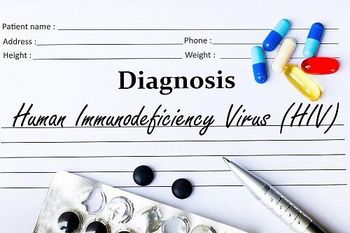
Microbe Moments from ASM 2025: Superbug Threats, Diagnostic Breakthroughs, and Environmental Clues
From predicting viral outbreaks via fungal spores and combating drug-resistant gonorrhea to advancing fungal detection through genomic sequencing and improving antiviral resistance testing for vulnerable patients, and more.
Airborne Fungal Spores May Predict Surges in COVID-19 and Influenza
Researchers from Puerto Rico’s RIPLRT Institute presented data that potentially linked spikes in airborne fungal spores with short-term increases in respiratory viral infections. Machine learning models analyzing data from San Juan and Caguas between 2022 and 2024 found strong correlations between spore levels and case surges of COVID-19 and influenza, especially during the fall. Notably, no such association was found with airborne pollen. This predictive capability points to the potential of fungal spore monitoring as a public health surveillance tool, providing early warning signals for seasonal outbreaks in high-risk areas.
A Group of Antimicrobial Compounds Shows Novel Action Against Multidrug-Resistant Gonorrhea
Ajit Parhi, PhD, chief scientific officer of TAXIS Pharmaceuticals, discussed the company’s promising dihydrofolate reductase inhibitors (DHFRIs), including TXA 15054, for treating multidrug-resistant gonorrhea. Unlike trimethoprim, which targets the same enzyme but has no effect on gonorrhea, TXA 15054 binds differently and avoids interaction with human DHFR, reducing toxicity. With a $2.9 million NIAID grant supporting development, TAXIS aims to identify a clinical candidate by 2026. As global rates of ceftriaxone-resistant gonorrhea continue to rise, including recent US cases, this class of compounds offers a potential solution to a looming public health threat.
How Genomic Sequencing Can Aid in Diagnosing Fungal Infections
Shaun Yang, PhD, of UCLA’s Department of Pathology, described a next-generation sequencing–based fungal ID test developed to improve accuracy in diagnosing complex fungal infections. Traditional morphology-based methods can fail to identify 5% to 10% of fungal isolates, particularly from emerging or environmental species. Yang’s team applied whole-genome sequencing targeting ITS regions and additional gene markers to identify pathogens in transplant and cancer patients. Case studies demonstrated how genomic precision guided correct diagnoses, enabled treatment changes, or ruled out hospital-acquired infections. The technology offers a powerful diagnostic advance for immunocompromised populations.
Considering the Value of Antiviral Resistance Testing in Certain Populations
Meghan Starolis, PhD, of Quest Diagnostics, discussed the role of genotypic and phenotypic antiviral resistance testing in supporting immunocompromised patients. Genotypic testing is faster and less labor-intensive but limited to known resistance markers; phenotypic testing detects resistance even from unknown variants but requires laborious virus cultivation. Starolis emphasized the importance of these tools in managing chronic antiviral exposure, especially in patients receiving stem cell transplants or chemotherapy. She also called for wider access to FDA-approved resistance assays, which could reduce delays in treatment and improve outcomes for vulnerable populations.
New Diagnostic Methods Differentiate Escherichia marmotae from E. coli in Clinical Isolates
Pelumi Oladipo, a PhD candidate at Wayne State University School of Medicine, presented 2 novel diagnostic methods capable of distinguishing Escherichia marmotae from Escherichia coli, closely related species with nearly identical phenotypes. The team identified the first confirmed human infection with E marmotae in North America by combining a TaqMan PCR assay targeting uidA and uidB with a MALDI-TOF-MS biomarker that revealed nonoverlapping spectral peaks between the species. Although current MALDI-TOF-MS systems misclassify E marmotae as E coli with 99.1% IVD confidence, whole genome sequencing reveals a 10% divergence between the two. They also identified a unique spectral peak (m/z 7260-7268) absent in E coli (7268-7280). E marmotae diverges genomically from E coli by 10%, with implications for treatment resistance and infection tracking. This study calls attention to the need for updated diagnostic protocols in clinical microbiology and demonstrates the clinical significance of cryptic clades.
More from ASM Microbe
Newsletter
Stay ahead of emerging infectious disease threats with expert insights and breaking research. Subscribe now to get updates delivered straight to your inbox.



















































































































































































































































































